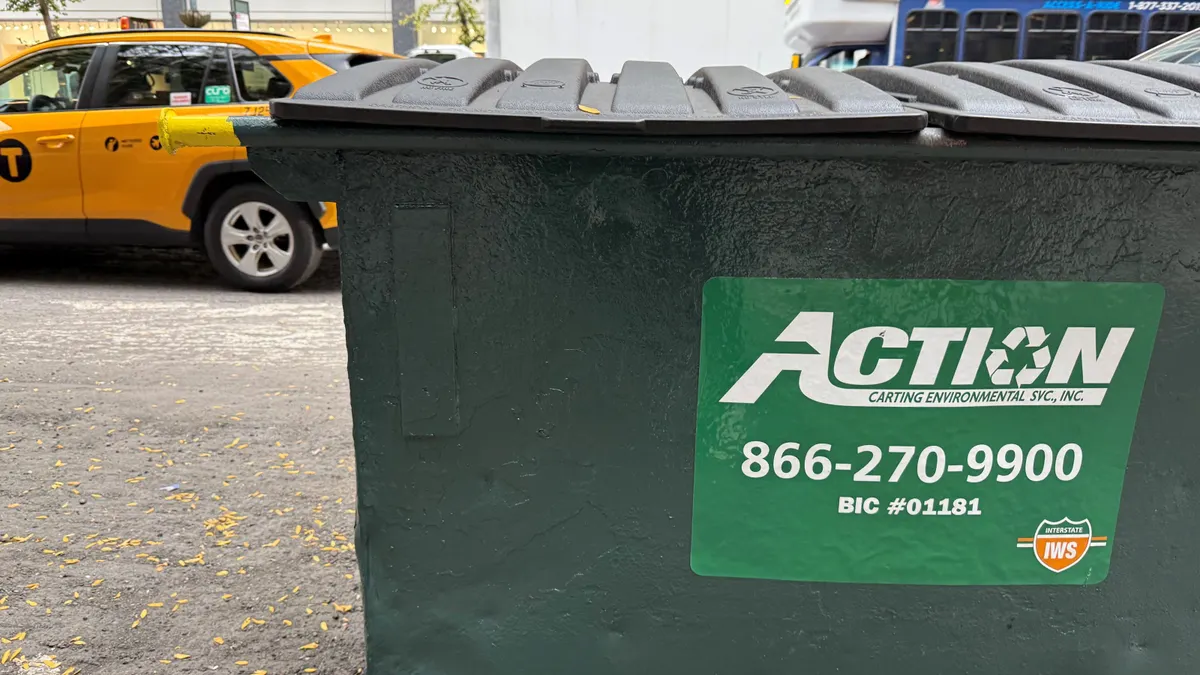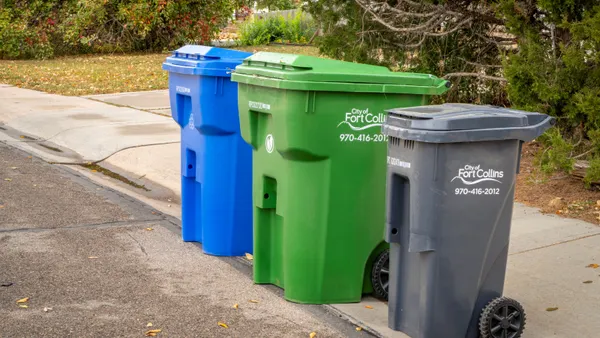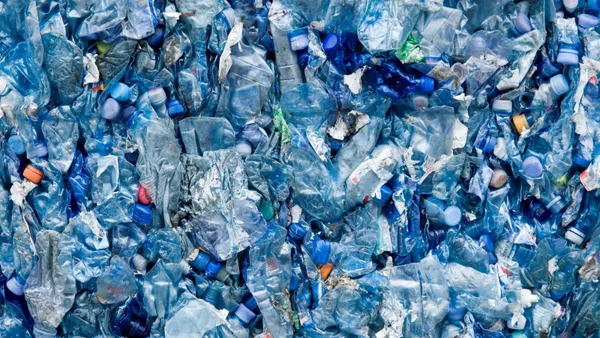Dive Brief:
- The UK government recently announced details of its new resources and waste strategy. One high-profile element, dubbed the "polluter pays" principle, would require companies to pay the full cost of collecting and recycling packaging they put into the market. This involves a tax on plastic packaging containing less than 30% recycled content and a ban on plastic when alternatives exist.
- Leaders are also considering the implementation of a container deposit system by 2023 and other ways to improve consistency among residential recycling programs. Another notable proposal is a requirement that curbside organics collection be available at every household by 2023.
- The overall plan has five key goals: making all plastic packaging entering the market recyclable, reusable or compostable by 2025; eliminating food waste going to landfills by 2030; eliminating avoidable plastic waste over the plan's 25-year span; doubling resource productivity by 2050; and eliminating avoidable waste of all kinds by 2050.
Dive Insight:
This new strategy from the Department for Environment, Food and Rural Affairs flips the current UK recycling structure on its head. Taxpayers currently pay for 90% of recycling costs and businesses cover about 10%, the Guardian reports — but the new plan makes producers take on the entire cost.
Extended producer responsibility (EPR) models make a product manufacturer — in this case, packaging — responsible for the item after its use. Governments view EPR as a way to encourage manufacturers to design products that are easier to reuse or recycle, instead of becoming waste at the end of their useful life. The UK already has EPR models for packaging, end-of-live vehicles, batteries and electronics, but this new plan pushes that principle further.
EPR has caught on more in European countries than it has in the U.S., largely due to the difference between national and decentralized regulatory structures for recycling. However, individual states have implemented EPR models for categories such as electronics and paint, and some have also considered ways to do this for packaging: the California Department of Resources Recovery and Recycling (CalRecycle), for instance, has been interested in an EPR model as a long-term goal.
Although environmental advocates frequently laud EPR strategies, opponents say many of the plans don't adequately share responsibility for recycling, can cause excessive market disruption and may allow for too much manufacturer control. Some point to manufacturers simply raising the price of their products to cover the cost of EPR compliance, essentially passing that expense down to consumers.
The UK's new strategy tackles waste from many angles. It also aims to develop policies to improve WTE efficiency, move away from weight-based recycling measurements, lessen the environmental effects of clothing, minimize waste in the construction industry and sustainably manage chemicals.
Although the "polluter pays" principle is the most highly cited portion of the plan, whole sections address improving consumer responsibility and incentivizing them to make sustainable purchases. In addition, the plan also aims to improve residential recycling rates through better consumer education and standardizing recycling programs — two elements that many U.S. municipalities are also emphasizing in an effort to improve domestic recycling rates.









